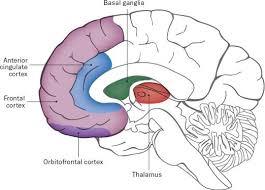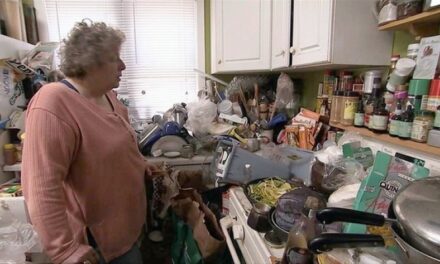Defining Hoarding Disorder and Different Hoarding Disorder Types
At Hoarding Help Central, we believe that defining hoarding disorder as well as understanding the different types of hoarding that can occur is central to effective treatment and intervention. Although it is often confused with collecting, hoarding is not the same as collecting and making this distinction is crucial to understanding exactly what hoarding disorder is and how it affects individuals.
Today, we will be defining hoarding disorder, looking at the ways it manifests and discussing the ways in which medical professionals and friends and family can successfully intervene and help those affected seek treatment. Although hoarding disorder can have a significant impact on the life of those it affects, understanding the disorder is the first step in helping to alleviate the symptoms. Let’s get started!

What is Hoarding Disorder?
Before we get started looking deeper into the causes of hoarding disorder, it is important that you have an understanding of what it is. Put simply, hoarding disorder is a psychiatric illness that can have a significant impact on the individual it affects, the friends and family of that individual, and even for the healthcare professionals that seek to intervene.
In short, hoarding disorder is defined as the persistent difficulty discarding or parting with possessions due to some perceived need or reason to save them. The thought of getting rid of their items causes a hoarder significant distress and anxiety, leading to the excessive accumulation of items in their homes and impacting their ability to go about their day to day lives.
There is a series of criteria that an individual must meet to be diagnosed with hoarding disorder and, in looking at this criterion, you will likely have a better understanding of what hoarding disorder is. Here are the criteria for hoarding disorder as outlined by the DSM-5:
- Persistent difficulty discarding items or parting with possessions, regardless of the actual value of the items.
- Difficulty discarding of items or parting with possessions is due to a perceived need to save the items and to alleviate the distress associated with the discarding of them
- Difficulting discarding of items or parting with possessions causes the excessive accumulation of items which then clutter active living areas, impacting an individual’s ability to use those areas on a day to day basis
- Hoarding causes significant distress and/or impairment in either occupational, social, or other areas of life
- Hoarding behavior is not attributable to an underlying health condition
- Hoarding behavior is not attributable to the symptoms of another psychiatric disorder (OCD, major depressive disorder, schizophrenia, ect.)
If these criteria are matched, an individual can be diagnosed with hoarding disorder. An accurate diagnosis of hoarding disorder is needed in order for effective treatment methods to be established for that individual. That is why the criteria highlighted by the DSM-5 is so crucial when it comes to defining hoarding disorder.

Why Do People Hoard?
So why do hoarders hoard? There are a series of commonalities that can be observed amongst individuals that hoard. These commonalities include age, genetics, personality, trauma, perfectionism, and social isolation. Let’s take a closer look at each of these commonalities to give you a better idea of the causes of hoarding disorder as well as how it manifests. Why hoarders hoard will also be further addressed when we look at the different types of hoarding as each type of hoarding typically comes with its own motivations.
Age
Although severe hoarding is most common in middle-aged adults around the age of 50, it has been observed often that hoarding behavior can occur in people as young as 11 to 15 years old. The saving of broken toys, outdated school papers, and even pencil nubs, for example, are typical behaviors during these early teenage years. This suggests that there are factors having to do with age that contributes to the root cause of hoarding disorder.
Genetics
Although genetics aren’t the root cause of the onset of hoarding disorder, there has been evidence to suggest that there is some genetic predisposition to the development of hoarding disorder. This means it is possible that one of the causes of hoarding disorder is a genetic predisposition and that the disorder can be passed down in the family.
Personality
While personality doesn’t play a huge role in the development of a hoarding disorder, it has been suggested by research that there is a commonality in hoarders in the presence of severe indecisiveness and anxiety. This suggests that those who suffer from anxiety and severe indecisiveness are at a greater risk of developing a hoarding disorder than those who don’t suffer from such traits.
Trauma
It is an observable commonality in hoarders to have undergone a traumatic life event or other circumstance. While it is unknown as to whether or not the occurrence of a traumatic life event is a direct cause of the development of hoarding disorder, evidence suggests that there is a link. It is thought that the development of hoarding behavior appears as a way to cope with traumatic life events in a hoarder’s life.
Perfectionism
It has been suggested that one of the biggest predictors of hoarding disorder is perfectionism. Perfectionism is a significant predictor of the worst outcome when it comes to treating hoarding disorder. Medical professionals should take perfectionism into account when attempting to treat someone for hoarding disorder.
Social Isolation
Finally, the last commonality observed in those with hoarding disorder is social isolation. Though this isn’t always the case, hoarders are often socially withdrawn and isolated and this causes them to collect items in excess as a way to cope with this isolation.

The Different Types of Hoarding
Next, let’s take a look at some of the different types of hoarding in order to gain a better understanding of what hoarding disorder is and how it manifests in individuals. In total, there are 7 different types of hoarders and each has its own unique motivations for hoarding behavior. Let’s take a closer look at each type.
Animal Hoarding
Animal hoarding is defined as a person that acquires more animals than they are capable of caring for. Animal hoarders typically begin hoarding animals due to what is actually the best of intentions. This may include a desire to save as many animals as possible, providing shelter or adoption. Unfortunately, as the accumulation of animals goes on, either through steadily acquiring animals or through the animals producing litters of their own, the situation can quickly get out of control. This leads to animals getting sick, being neglected, or, in the worst case, dying.
Bibliomania
Bibliomania, also known as information hoarding, is defined as the act of hoarding books. This category of hoarding usually involves individuals with extremely high levels of intelligence and the information hoarder typically justifies their compulsion to hoard based on a quest for greater knowledge. For the information hoarder, letting go of books, magazines, or other sources of information is highly distressing.
Syllogomania
Syllogomania is the hoarding of trash or garbage. To be considered a pure syllogomania case, there must be no items of any value, sentimental, or functional use. Although these cases are rare, they do exist. In the case of syllogomania, extremes have usually been encountered including utilities being completely shut off, the home is contaminated, and conditions are filthy.
Larder Hoarding
Larder hoarding is usually caused by the fear of losing everything. In the case of larder hoarding, the individual’s fear of losing everything they own causes them to stockpile items in case they need it one day. In these cases, an individual is living in a constant state of “survival mode” and stockpiling items translates to excessive clutter in their homes.
Recyclers Hoarding
Recyclers hoarding is defined as the presence of large piles of plastic, glass, and aluminum cans- more than would ever be found in the typical home. These individuals are usually motivated to hoard due to the delusion that these items will bring them large amounts of cash for recycling them. Unfortunately, the amount of recyclables found in the home makes it nearly impossible to ever take enough trips to the recycling center to remove the items from the home successfully.
Collectors Hoarders
Collectors hoarders are motivated to hoard due to what starts off as a fairly harmless passion for collecting. Soon, however, the individual’s desire to collect results in an excessive amount of one item. Soon their habits become more than just collecting, translating into hoarding of a particular item.
Shopaholics
To understand the motivations of shopaholics, it is important to note that, over time, most hoarders lose a large part of their social lives and find themselves feeling alone without the happiness they once experienced in life. For this reason, shopaholics are driven by the thrill of the high that purchasing gives them. This high is so intense that they soon purchase just for the sake of making a purchase, resulting in excessive accumulation of items in their homes. In an attempt to use items to replace the positive emotions the shopaholic feels that they are lacking, this particular type of hoarder can be put into a bad financial state due to consistent purchases.









